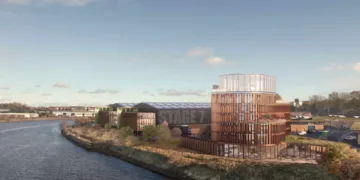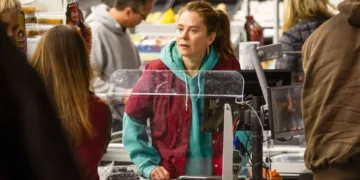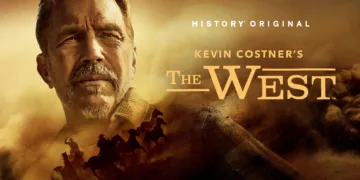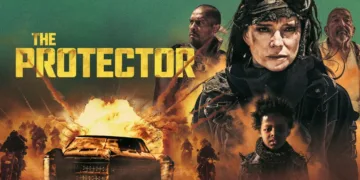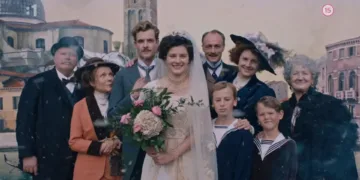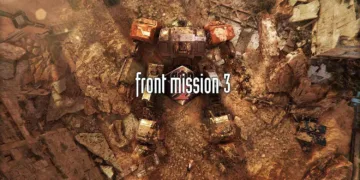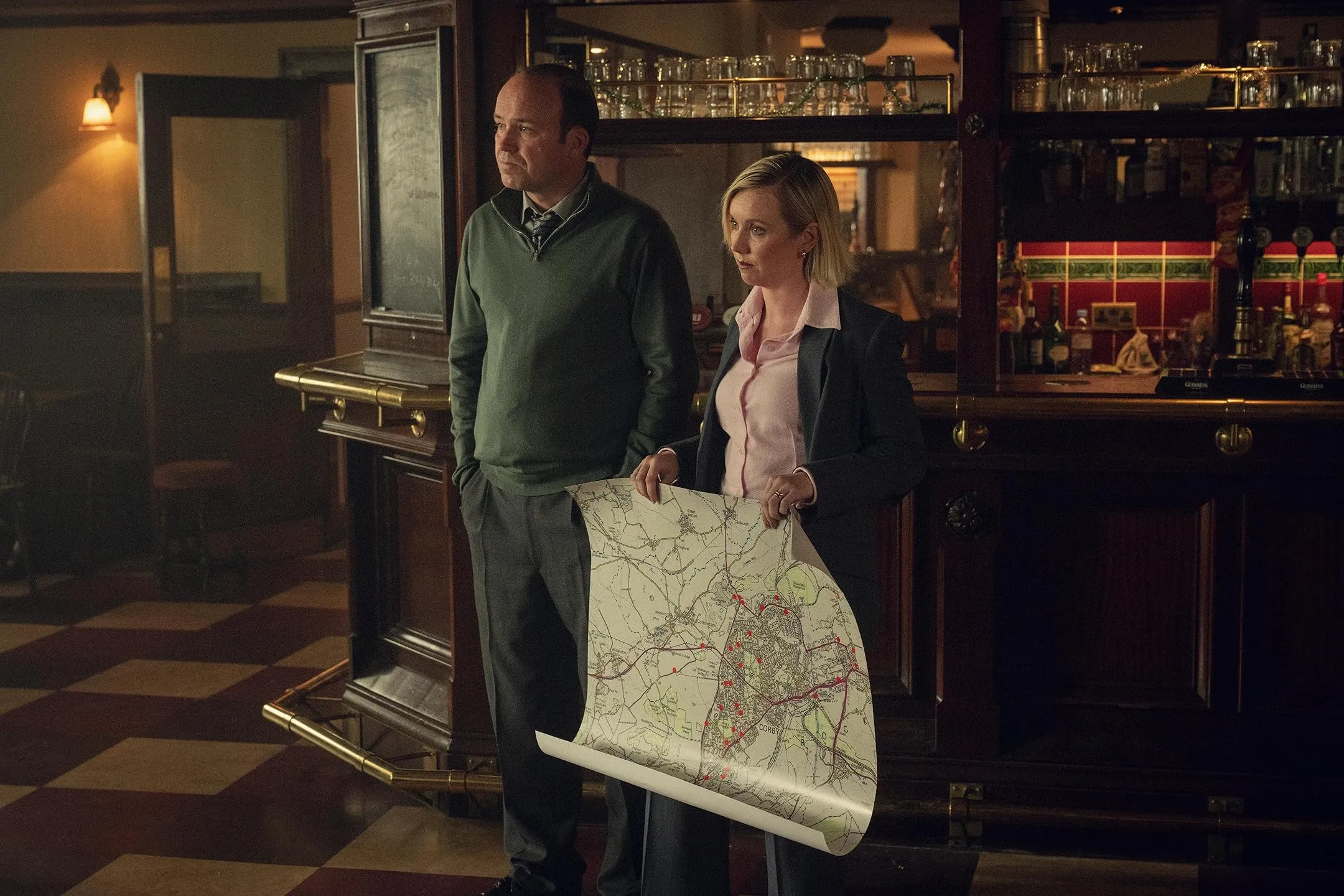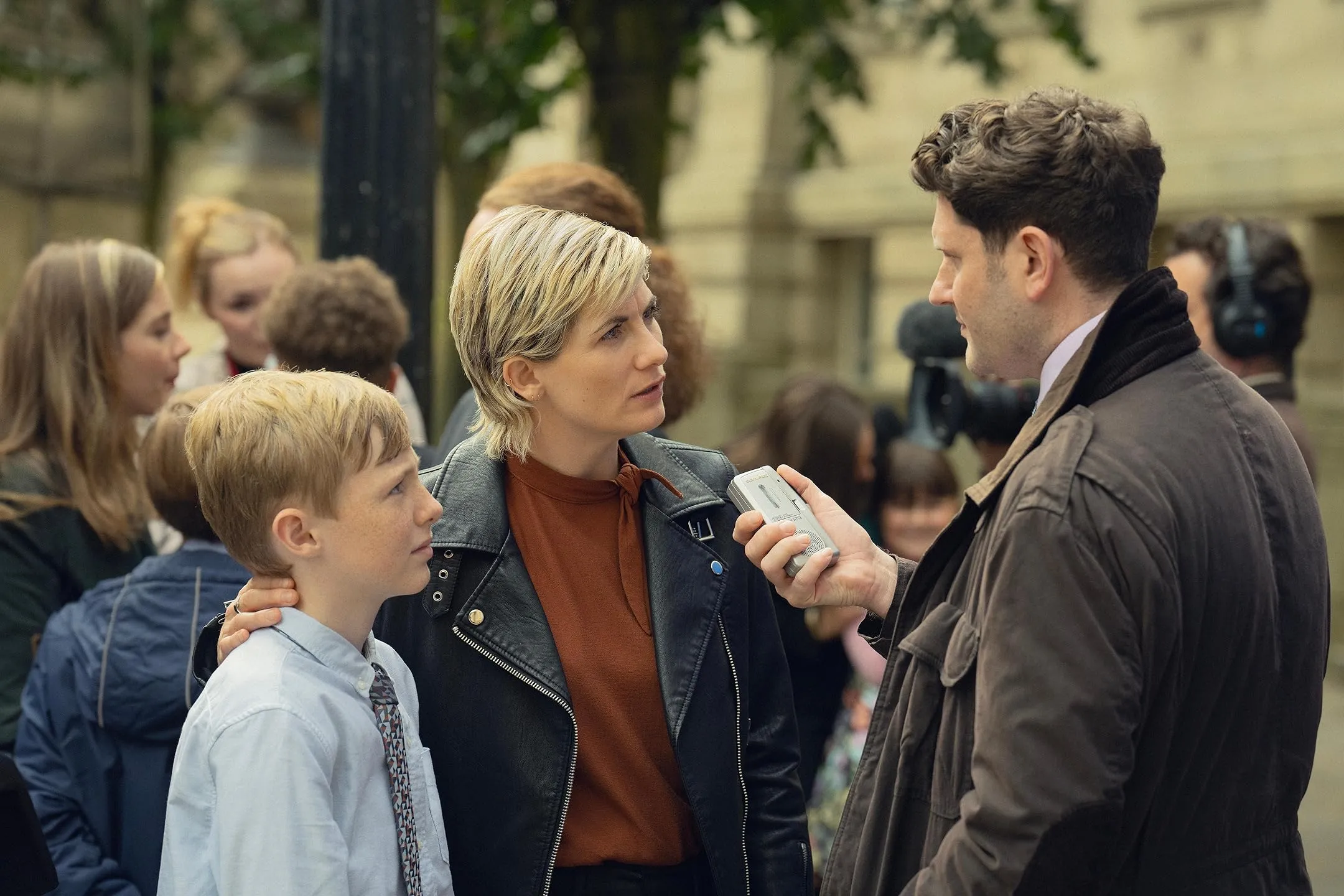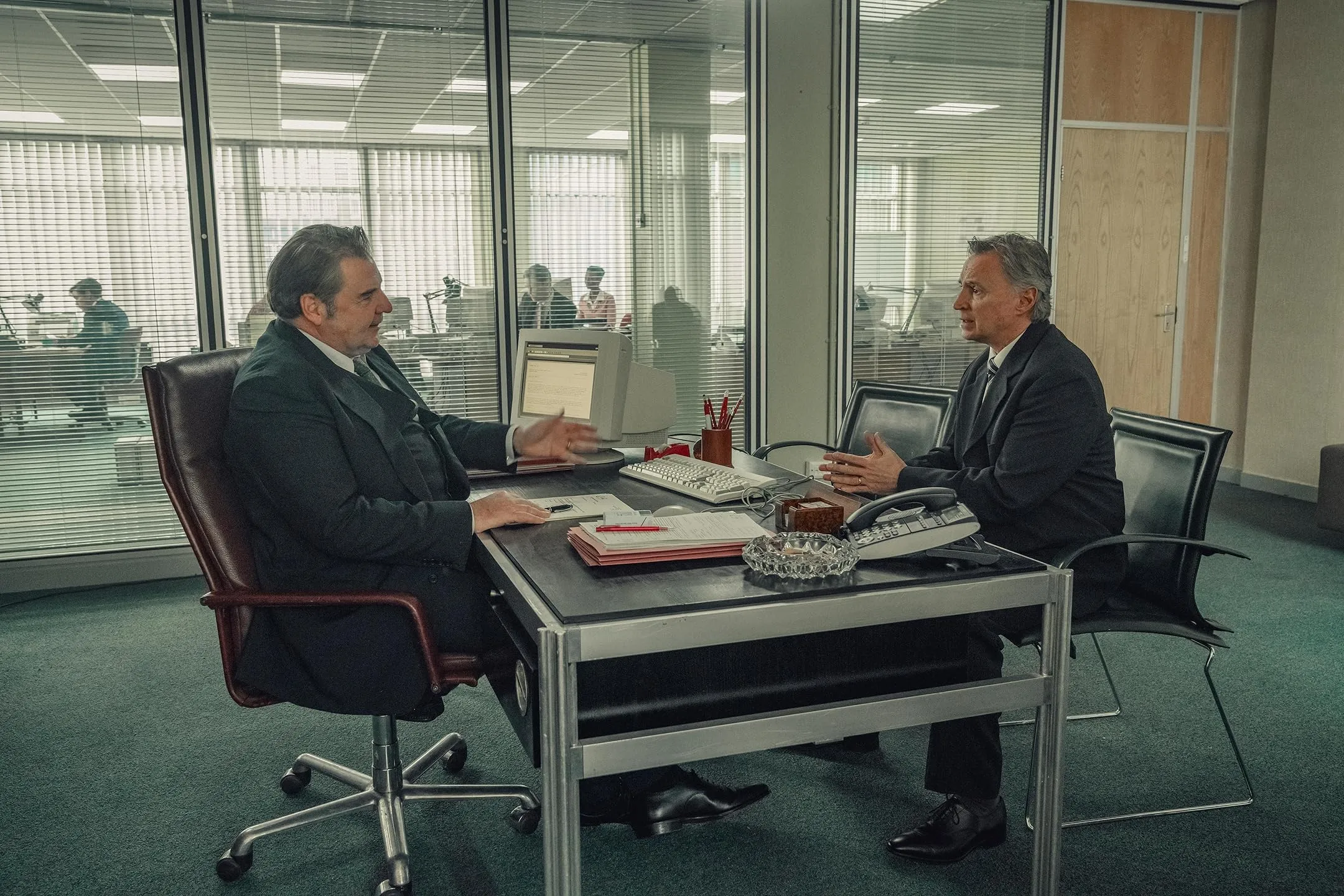The series opens with a vivid portrayal of Corby, a town that once thrived on its steel industry. In the mid-1990s, Corby’s identity was tightly interwoven with the rise and fall of its industrial might, a force that shaped both its economic fortunes and the daily lives of its residents.
The narrative paints a picture of a community struggling with the decline of traditional manufacturing, where the remnants of a once-powerful steel town linger in the shadows of economic transition.
Central to the story is the toxic incident that disrupted the town’s fragile recovery. The development project, intended to rejuvenate the area, inadvertently stirred a dangerous legacy of environmental negligence.
Toxic substances, remnants of industrial activity, became a catalyst for the series’ unfolding drama, impacting local families and challenging the fabric of the community.
The depiction of this scandal is meticulous, highlighting how the negligence surrounding waste management left an indelible mark on Corby’s residents, setting off a chain of events that would redefine the town’s future.
The real-life events that inspired the series serve as a reminder of the enduring impact of industrial decisions on communities, provoking thoughts on how historical missteps continue to shape modern lives.
Unfolding Timelines and Dramatic Arcs
The series arranges its episodes across a span from 1995 to 2009, capturing key moments that reveal the progression of a community in crisis. Each installment shifts the focus to a distinct period, allowing the audience to witness changes in the town’s fabric and the mounting tension surrounding the environmental disaster.
This episodic approach presents a snapshot of events that slowly assemble into a broader narrative, where every time slot brings its own set of revelations and personal challenges for the characters.
The core storyline centers on the discovery of dangerous substances released during a redevelopment project, which inflicts lasting damage on the local population. As evidence of the toxic mishandling comes to light, the series portrays a legal battle that underscores the human cost of unchecked industrial practices.
The narrative carefully interlaces recorded events with dramatized moments, providing a clear account of how real-life incidents influenced the lives of those involved while adding dramatic elements that heighten the tension.
Pacing plays a critical role in maintaining the audience’s investment. The series shifts seamlessly between slow-burning courtroom confrontations and emotionally charged personal scenes.
For instance, moments of quiet determination in a character’s expression or a charged exchange in a council meeting work together to keep viewers engaged. This careful management of tempo ensures that suspense builds gradually while moments of intensity hit with well-timed impact.
Such a structure invites comparisons to works that mix fact and dramatization in a series format, placing emphasis on how narrative progression and emotional impact work in tandem to forge a memorable viewing experience. One is left to ponder how each timeline enriches the overall portrayal of the struggle for accountability.
Faces of Resilience and Connection
Susan McIntyre stands out as a character whose transformation captures the heart of the narrative. At the beginning, she is portrayed as a woman burdened by uncertainty and despair, facing the harsh realities of a failing industrial town.
Over time, her evolution into a determined advocate reflects a shift in both spirit and resolve, turning personal hardship into a public fight. Her journey offers a clear picture of how personal pain can ignite a spark of courage that challenges systemic neglect.
Tracey Taylor provides a contrasting yet equally poignant narrative. Her portrayal is marked by quiet strength and an unmistakable sense of vulnerability.
The series presents her struggle with personal loss and the burden of unmet expectations, painting a portrait of a character who bears deep emotional scars while displaying an unwavering commitment to protect her loved ones. This character’s resilience is not portrayed through grand gestures but rather in subtle expressions and moments of silent determination.
Supporting roles further enrich the storyline. Maggie Mahon plays a key part in bridging the personal and collective experiences of the community. Her involvement, though not as central as Susan or Tracey, adds layers to the overall narrative by highlighting the shared struggles that bind the affected families.
The inclusion of the legal representative and other secondary figures introduces the challenges posed by bureaucracy and the power structures in the town, offering a counterpoint to the personal tales of loss and resistance.
The interplay among these characters brings a human element to the narrative, as their relationships and shared experiences underscore the impact of the crisis. Moments of solidarity among the mothers contrast sharply with the cold demeanor of the corporate and council figures.
Specific scenes, such as a quiet exchange of understanding between the protagonists during a community meeting, serve as memorable examples of character transformation and the emotional weight carried by every individual involved.
Social Reflections and Thematic Layers
The series takes a clear stance on the misuse of power by influential figures and institutions. It presents a scenario where profit-driven motives lead to negligence and cover-ups.
Specific scenes reveal officials dismissing safety concerns while industrial interests receive special treatment, a situation that not only causes personal loss but also disrupts the fabric of the community. The depiction of bureaucratic indifference highlights how profit motives can override safety and human welfare.
At the heart of the story is an environmental crisis that directly affects public health. The narrative paints a stark picture of a town grappling with the fallout of toxic exposure, where families face long-term health issues stemming from industrial mismanagement.
This element is interwoven with the portrayal of community suffering, prompting viewers to consider the lasting effects of industrial practices on everyday lives. The show brings attention to the silent, ongoing struggles for a safer environment in places that have suffered from outdated practices.
A prominent theme in the work is the strength found in communal support. The affected families band together, pooling their limited resources and emotional reserves to stand against the injustice. Scenes featuring community meetings and shared personal hardships create a vivid portrayal of how individuals can unite when faced with common adversity. This sense of togetherness is presented in a way that feels both personal and relatable, adding depth to the narrative.
Lastly, the series does not shy away from the toll that personal loss takes on individuals. The emotional weight carried by the characters, especially the mothers, is portrayed through quiet moments of reflection and raw, heartfelt exchanges. These intimate portrayals remind the audience that behind every political or legal struggle are real people whose lives have been permanently altered by neglect and mismanagement.
Visual Storytelling: Production Design and Directorial Vision
The setting of Corby emerges through a careful visual construction that transforms an area marked by industrial decline into a place of enduring community spirit.
The series uses a thoughtful mix of lighting and color choices that shift between the stark grays of a fading steel town and the warmer tones that suggest hope in modest, everyday life. The set design paints a picture of a town marked by history—a place where abandoned factories share space with scenes of communal gatherings in familiar neighborhood corners.
The director employs techniques that balance an authentic depiction of life in Corby with moments that heighten the emotional impact. In one memorable scene, a slow-motion shot captures a cloud of dust drifting over a once-bustling street, symbolizing the lingering effects of industrial negligence.
This visual moment serves as a metaphor for the unseen consequences of decisions made long ago. The approach allows the story to remain grounded in reality while providing cinematic flourishes that emphasize key narrative shifts.
The sound design further enhances the experience, with a soundtrack that underscores the tension and subtle hope woven through the narrative.
Carefully chosen musical cues set the tone for both intimate moments and broader scenes, and a precise editing rhythm smoothly connects the various timelines presented in the series. This attention to detail in every visual and auditory element contributes to an overall experience that prompts viewers to consider how a town’s history can echo through every frame of the story.
The Craft of Words: Script and Writing Style
The script uses dialogue that feels genuine, featuring homegrown expressions and memorable lines that add warmth to the series.
The conversations capture the spirit of a community fighting for fairness, and the choice of words reinforces key ideas of justice and unity. Each exchange is designed to reflect the experiences of everyday people confronting a harsh reality, allowing viewers to connect emotionally with the characters.
The narrative is paced in a way that balances straightforward exposition with moments focused on character interactions. The writing allows the story to move smoothly between explaining events and exploring the personal emotions of those affected. There is a careful mix of informative details and moments that let the characters speak for themselves, making the progression feel natural and engaging.
The script effectively blends historical facts with creative storytelling. It presents real-life incidents alongside dramatized personal stories, offering a perspective that is both informative and emotionally engaging.
This approach provides clarity about the events while also drawing the viewer into the intimate struggles and victories of the characters, leaving space for reflection on the true impact of these events.
The Review
Toxic Town
The series delivers a heartfelt portrayal of community resilience against corporate missteps. Its interwoven narrative of personal struggle and legal battles, supported by meticulous production and authentic dialogue, creates a memorable viewing experience. While certain dramatic moments feel expected, the overall execution engages on both an emotional and intellectual level.
PROS
- Authentic character portrayals
- Engaging narrative structure
- Effective blending of fact and dramatization
CONS
- Occasional predictable dramatic beats
- Some pacing issues in early episodes















